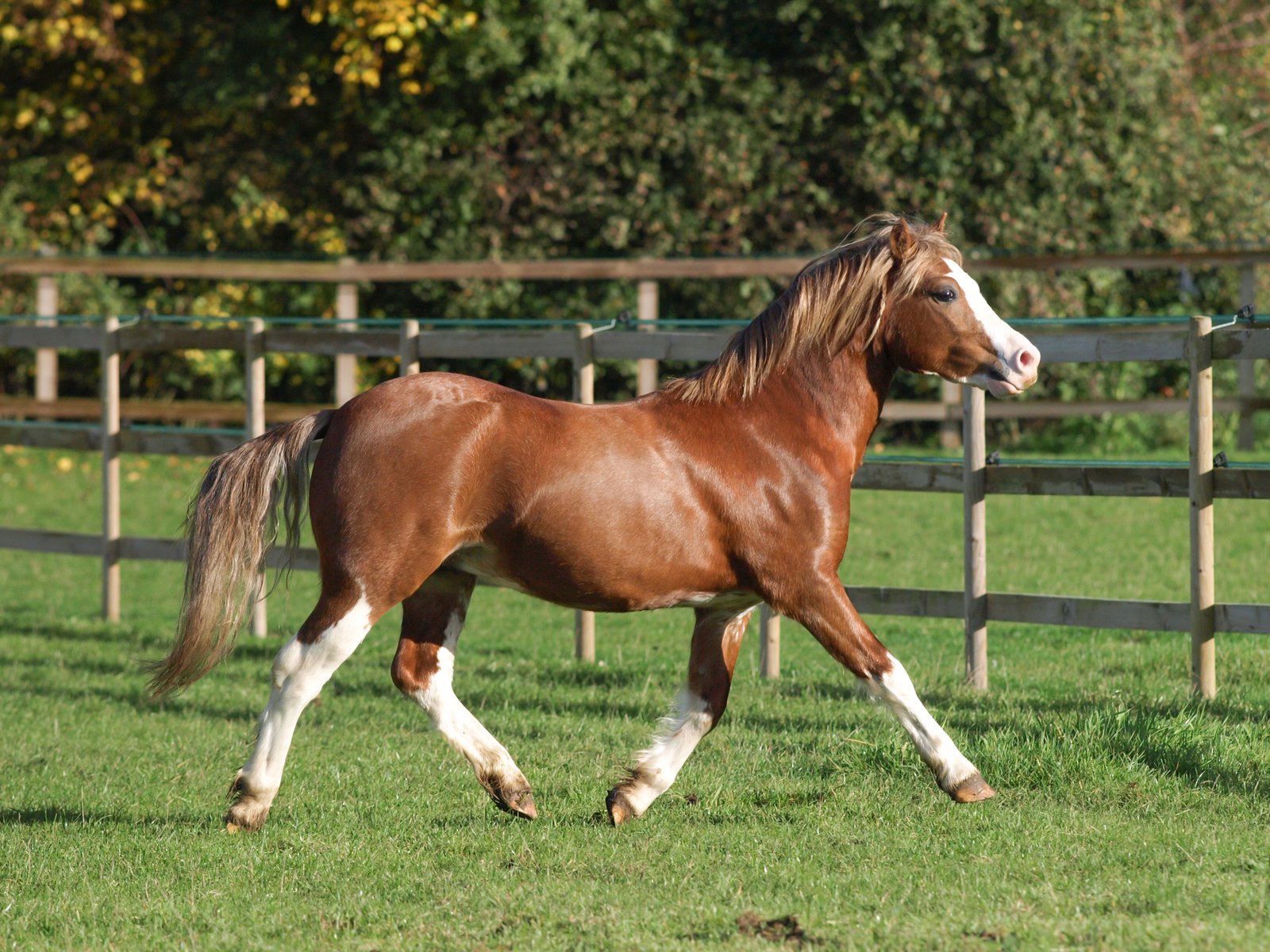Among the many horse breeds around the world, few are as beloved, versatile, and full of character as the Welsh Pony and Cob.
These hardy little horses, hailing from the rugged hills and valleys of Wales, have captured the hearts of equestrians for centuries. Known for their strength, intelligence, and striking appearance, they’ve become favorites in everything from children’s riding ponies to high-level competitive driving.
But the Welsh Pony and Cob aren’t just one breed—they’re a family of types, each with its own distinct personality and traits. Together, they represent a proud equestrian tradition and a living link to the landscape and culture of Wales.
Let’s explore the history, types, characteristics, and modern roles of these remarkable animals.
A Rich History Rooted in the Hills
The origins of the Welsh Pony and Cob go back thousands of years. They evolved in the tough terrain of Wales, a region known for its mountains, moorlands, and harsh weather. Over time, natural selection favored small horses with strong bones, excellent stamina, and clever minds—traits that still define the breed today.
The first written references to these ponies date back to the medieval period, but archaeological evidence suggests their presence in Britain long before that. Roman writings even mention sturdy native ponies in Wales that were used by Celtic warriors.
Over centuries, these ponies were crossbred with Arabians and other light horses to improve their refinement and movement. Despite changes in type and use, the Welsh Pony and Cob never lost their native hardiness.
The Four Sections: One Breed, Many Forms
The Welsh Pony and Cob is divided into four sections, each classified by size and build. Though technically one breed, the sections reflect different types and functions.
1. Section A – Welsh Mountain Pony
These are the smallest of the group, standing under 12 hands high. Don’t let their size fool you—they’re bold, intelligent, and incredibly sure-footed. Originally used for shepherding and transport in the hills, today they’re popular children’s ponies. They have refined heads, expressive eyes, and a compact build.
2. Section B – Welsh Pony
A bit taller and more elegant than the Mountain Pony, Section B ponies can stand up to 13.2 hands high. They were developed to be riding ponies with more refinement and athletic ability, suitable for both children and small adults. Their movement is flashy and fluid, making them standouts in show rings.
3. Section C – Welsh Pony of Cob Type
This section blends the agility of the pony with the substance of the cob. Strong and stocky, Section Cs typically stand up to 13.2 hands high and are known for their bold, powerful movement. They’re ideal for driving, jumping, and showing—and have a “big horse” personality in a smaller package.
4. Section D – Welsh Cob
The largest and most powerful of the breed, the Section D Welsh Cob stands over 13.2 hands and often reaches 15 hands or more. Known for their strength, courage, and impressive action, these horses were historically used for farm work, pulling carts, and carrying soldiers into battle. Today, they excel in dressage, driving, eventing, and more.
Each section shares core traits—intelligence, stamina, a good temperament—but also has its own unique look and feel.
Temperament and Personality
One of the standout features of the Welsh Pony and Cob is their temperament. These horses are clever, often mischievous, but generally willing and eager to please. Their intelligence makes them quick learners, though sometimes a bit too smart for their own good. They’re often described as having “character”—and anyone who’s worked with one knows exactly what that means.
This blend of personality and work ethic makes them ideal for riders of all levels. Whether it’s a young child learning to ride or an experienced adult looking for a bold competition partner, there’s a Welsh Pony or Cob to match.
A Versatile Performer
Welsh Ponies and Cobs are used across disciplines and settings:
- Children’s Riding Ponies: Especially Sections A and B, known for their safety, responsiveness, and manageable size.
- Driving and Carriage Work: Sections C and D are stars in competitive driving due to their strength and flashy movement.
- Dressage and Jumping: Their agility and natural balance allow them to shine in these more technical disciplines.
- Eventing and Trail Riding: Tough feet and great stamina make them reliable partners for long rides or cross-country courses.
- Shows and Exhibitions: Their proud carriage, expressive gaits, and shiny coats make them ring favorites.
You’ll find them around the world—especially in the UK, US, Australia, and Europe—where they consistently win fans and competitions.
Breed Preservation and Global Reach
The Welsh Pony and Cob Society (founded in 1901) has helped maintain high standards and promote the breed across the globe. With well-documented bloodlines and a strong community of breeders and enthusiasts, the breed continues to thrive.
Crossbreeding has also played a role in modern sport horses. Many successful riding ponies and smaller eventers have Welsh blood, adding that famous combination of movement, temperament, and toughness.
Final Thoughts
The Welsh Pony and Cob are much more than pretty faces. They’re the embodiment of hardiness, versatility, and heart. From ancient hillsides to modern show rings, they’ve proven time and again that they can do just about anything. Whether pulling a cart, clearing a jump, or teaching a child to ride, they do it with a spirit and flair that’s uniquely Welsh.
If you’re looking for a horse or pony with a big personality, a proud presence, and a legacy of excellence, look no further than the Welsh Pony and Cob.

